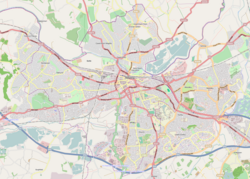| Brock Barracks | |
|---|---|
| Reading, England | |
 Brock Barracks Keep | |
| Site information | |
| Type | Headquarters building |
| Owner | Ministry of Defence |
| Operator | |
| Location | |
| Coordinates | 51°27′29″N01°00′12″W / 51.45806°N 1.00333°W |
| Site history | |
| Built | 1881 |
| In use | 1881–present |
| Garrison information | |
| Garrison | 7th Battalion The Rifles |
Brock Barracks is a British Army barracks in the town of Reading in the English county of Berkshire. Located on Oxford Road in the district of West Reading. The majority of the buildings and structures within Brock Barracks are Grade II listed. [1] [2] [3] [4] [5] [6] [7]
